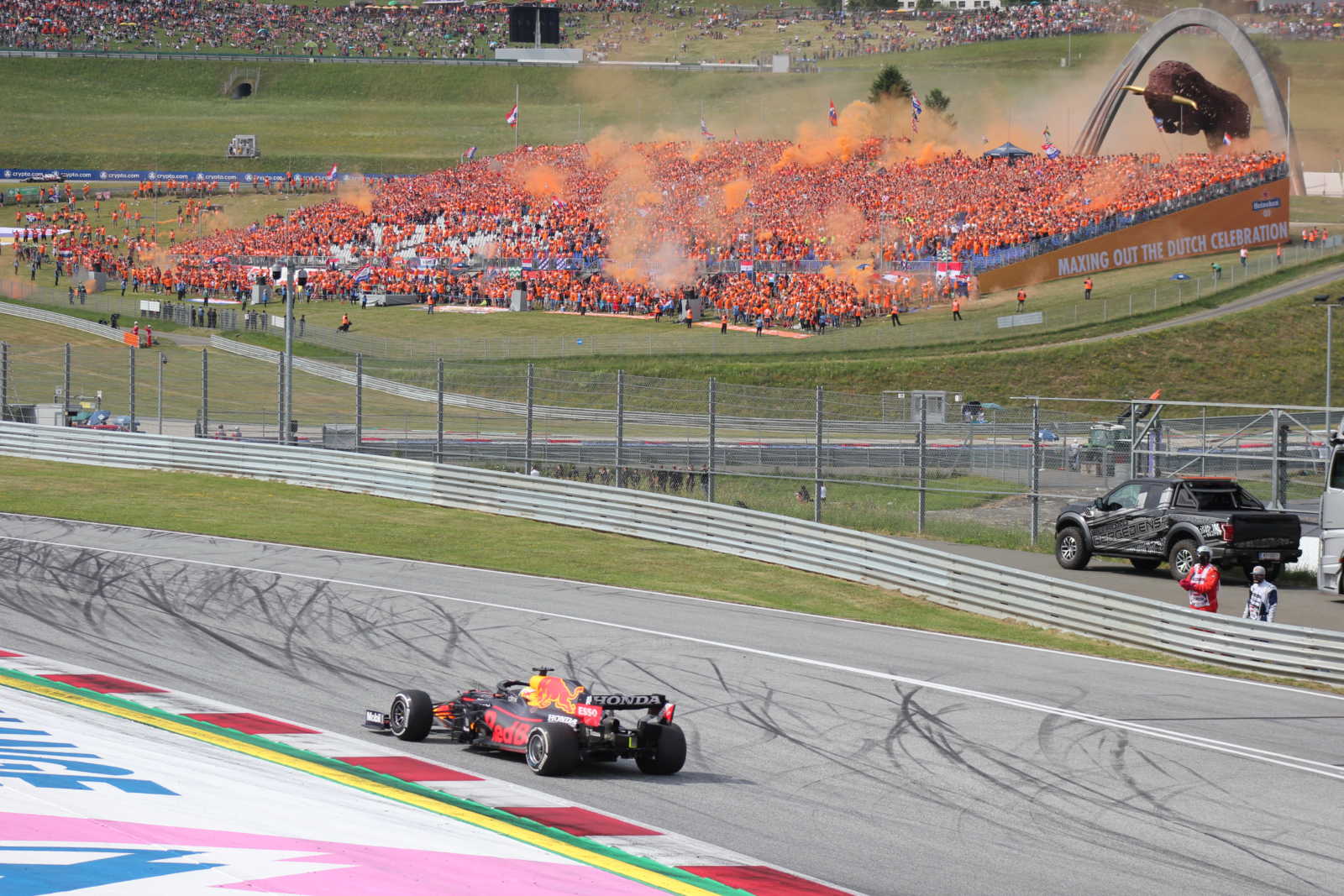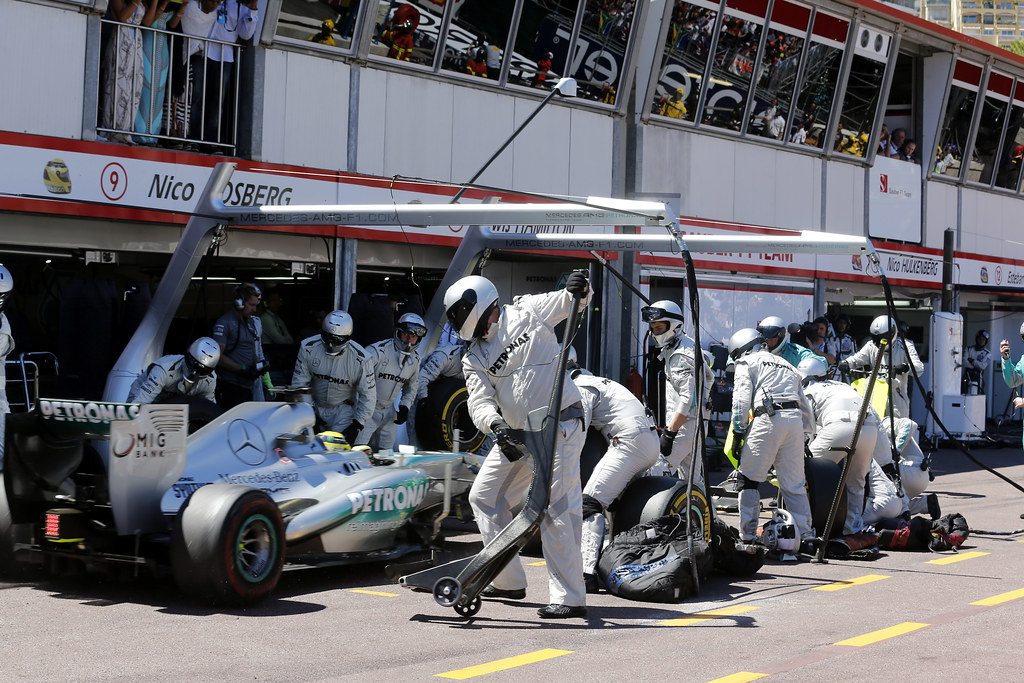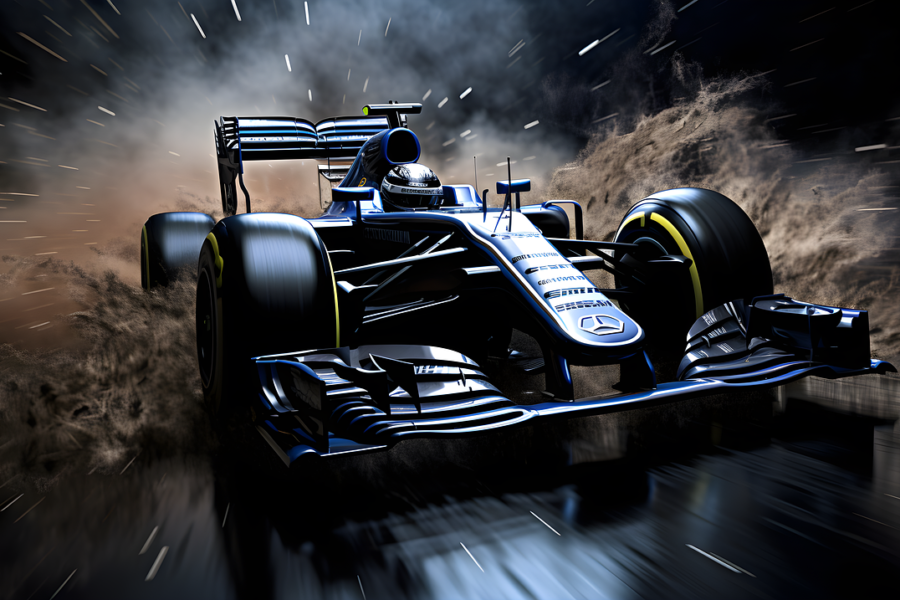Is Formula 1 a sport or a show? The debate rages on, with some claiming it’s just entertainment, while others disagree because of the physical demands this type of racing places on the drivers. On the one hand, the FIA Formula One World Championship is considered a motor racing sport. On the other hand, it cannot exist without spectacle, with showmanship becoming an integral part of the racing series. So who’s right? In fact, despite the endless debates, both perspectives are pretty fair for the reasons you will explore in this article. So, let’s delve into the delicate balance between sport and show in F1 to help you form your own opinion on this fascinating subject.
Let’s start with the basics.
Is Formula 1 A Sport or A Show?
The Cambridge Dictionary explains sport – as a competition or activity needing physical effort and skill to be played or done according to rules, for enjoyment and/or as a job.
Is Formula 1 a competition with the requirement for racers’ physical effort and skills? Absolutely, because the Grand Prix is the challenge, where the drivers use all of their professional skills to compete with each other during a long race.
As for the show, the Cambridge Dictionary describes the term as a television or radio program that is entertaining rather than serious or an event at which a group of related things are available for the public to look at.
Does it suit Formula 1? Indeed, because this event is entertaining and available for the public.
However, the stumbling block of debates about whether F1 is a show or a sport is that the show’s purpose is to entertain rather than be a serious event, while the sport, in its origins, is a severe test.
Overall, it opens the field for endless talking on which side Formula 1 is set to be.
But, let’s be frank, the disputes are a bit overreacted, and here is why.

The Concept Of Balance Between Sport And Show
To better understand what I mean, let’s divide Formula 1 into its key components that make it different from any other sport.
So, what comes first to your mind about Formula 1? The rich history, the cutting edge technologies, or simply the fastest cars, significant budget, highest forces, famous drivers, and the racing strategy, right? Let’s take a closer look at each one.
#1. From The Rich History
Since the first-ever Formula One race Turin Grand Prix in 1950, the event has been positioning itself as the fine fleur of auto racing and crème de la crème of famous people. On the other hand, it always was a demanding sporting challenge, and that’s the historical contribution.

From the heated rivalry between Alain Prost and Ayrton Senna to the dominance of Michael Schumacher to the exciting rivalry between Max Verstappen and Lewis Hamilton, Formula 1 is a challenging sport that entertains people. ‘The Theatre at the Wheels’ or the balance between show and sport from its history.
#2. The Cutting Edge Technologies Or Fastest Cars In The World
Needless to say, Formula 1 uses engineering marvels, from materials like carbon fiber to specific design innovations like HALO. Together, they allow drivers to go as fast as 350 km/h but provide the safety of racing.
These technologies are made for competitive sports but are attached to people’s attention. However, the cars designed for Formula 1 are made for competition at high speeds, improving the showmanship.
#3. The Significant Budget In And Of The Formula 1
Formula 1 is about money, and that has come from its origins, as it was a sport for elites. Therefore, the budget stands behind-scene action; from exorbitant ticket prices to multi-million dollar car parts and driver salaries, the sport demands a significant investment.
Just to compare. Rally drivers participating the entire season in the FIA World Rally Championship may count on a modest salary of $1,000,000 – a bit higher than a Formula E driver gets per year. And only F1 drivers’ salaries are estimated at tens of millions of dollars, like Lewis Hamilton’s honor of $55,000,000 for the 2023 season.
However, money pays back, as this financial commitment fuels the spectacle, allowing for the development of groundbreaking technology and attracting the world’s best talent, supporting the balance between show and sport.
#4. High Forces To Test The F1 Driver’s Human Limits
It’s not a secret that F1 sets its leading place as a sport with the highest G-forces, comparable to those experienced by astronauts, pushing the limits of human endurance.
Imagine, at the 2021 British Grand Prix, Max Verstappen withstood a 51G impact, highlighting the immense physical demands.
They maintain focus and concentration for hours on end, react quickly to changing conditions, and make split-second decisions.
Is it about sport? Of course, but risks bring the show’s elements, attracting spectators.
#5. Famous Drivers, Role Models, Businessmen
It came to the past the time when drivers racing in Formula 1 were just talented athletes. Today, there are global icons. They are role models who set the tone and affect the culture.
Their social media presence and advocacy for social causes like ‘Black Lives Matter’ inspire millions. This cultural impact extends beyond the track, making Formula 1 a platform for promoting personal image, causing positive change, and even business.
Thus, almost every F1 driver is an entrepreneur in various businesses. Pick any other sport where participants are so influential, but Formula 1 is, and that is again about the balance between sport and the show.
#6. Strategy: The Unsung Hero of Formula 1
Formula 1 is like a chess game on wheels. Teams meticulously plan pit stops, tire choices, and overtaking maneuvers, making every race a thrilling battle of wits.
So, just one more unpredictable step and plans can unravel instantly, creating dramatic moments that keep audiences on the edge of their seats.
Despite the strategy being a component of the sport, it makes the Grand Prix more familiar with the show. Paradox, no less.
These six points define Formula 1 and describe its essential components. Take away any of them, and it wouldn’t be F1 anymore.
Therefore, a good balance defines Formula 1 as a sport but fuels its popularity annually, reaching 6.15 million spectators for the 2023 season.

Switching Or When Formula 1 Is A Show
The consequence of the imbalance is that the Grand Prix becomes a farce. I have two worthy examples on my mind.
The first is the debuting Las Vegas Grand Prix in 2023. Although the race was interesting, there was a moment I can call a good impression. Instead of focusing on the rules and regulations, the organizations make the race week the fair show, with all possible spectacular elements.
The Formula 1 show was perfect, but due to the drain cover, which inspecting was of the organizer’s duties, Carlos Sainz damaged the car and even got a penalty. Scuderia Ferrari didn’t get any compensation.
Another good example is the Abu Dhabi 2021 Grand Prix. Leaving the feelings of fans and the racing strategy of Max Verstappen and Lewis Hamilton behind, if Michael Masi kept the rules instead of making the restart more spectacular, the final race would have been more athletic than showmanship.
Vice versa, those races wouldn’t be so attractive to the fans.
The conception of the sprint in Formula 1, which brings additional risks to the teams, is another example of making F1 spectacular. However, as its rules are still under development, I think the event needs time to set its place in the racing weekend.
Takeaways
There can’t be a choice whether Formula 1 is a sport or a show because it is a mix of both. That comes from its origins.
Moreover, it needs to distinguish the past and present. The F1 of Bernie Ecclestone differs from the F1 of Liberty Media.
With becoming more spectacular under Liberty Media’s ownership since 2016, F1 has started constantly evolving in its terms, embracing technological advancements, and prioritizing both.
The ultimate balance between competitive racing and compelling entertainment is a fine line.
To change one of the crucial parts, whether race strategy, driver popularity, unique technologies, car performance, significant budget, and racing heritage, is to break the entire system.
If we make it more spectacular, we lose its sporting pillar. Conversely, if we make Formula 1 more athletic, it may return to its origins, becoming a closed challenge only for the elite.
The next time someone asks, ‘Is Formula 1 a sport?’, say it’s a theatrical performance where technology, speed, strategy, and human drama converge. It’s a show unlike any other.
The last question is, how do you think Formula 1 has struck the perfect balance between sport and show, or is there room for improvement? Feel free to leave your comments below.
References
- The Race, by Scott Mitchell-Malm ‘IS F1 GOING TOO FAR IN THE PURSUIT OF A GOOD SHOW?‘ https://www.the-race.com/formula-1/f1-sport-show-australian-gp-restarts/ (April 5, 2023)
- Reddit, r/unpopularopinion ‘F1 is not a sport at all, it’s just entertainment‘ https://www.reddit.com/r/unpopularopinion/comments/vx3ukw/f1_is_not_a_sport_at_all_its_just_entertainment/ (2022)
- Forbes, by Brad Adgate ‘Here’s Why Formula 1 Racing Is Growing In Popularity With Women‘ https://www.forbes.com/sites/bradadgate/2024/03/11/heres-why-formula-1-racing-is-growing-in-popularity-with-women/?sh=331adbba137c (March 11, 2024)
- Wikipedia ‘Formula One‘ https://en.wikipedia.org/wiki/Formula_One (2024)
- Investopedia, by Hiranmayi Srinivasan ‘Here’s How F1 Teams and Drivers Make Millions‘ https://www.investopedia.com/the-economics-of-formula-1-here-s-how-f1-teams-and-drivers-make-millions-7555800 (July 05, 2023)
- Cambridge Dictionary, ‘Sport‘ https://dictionary.cambridge.org/dictionary/english/sport (2024)
- Cambridge Dictionary, ‘Show‘ https://dictionary.cambridge.org/dictionary/english/show(2024)




Leave a Comment